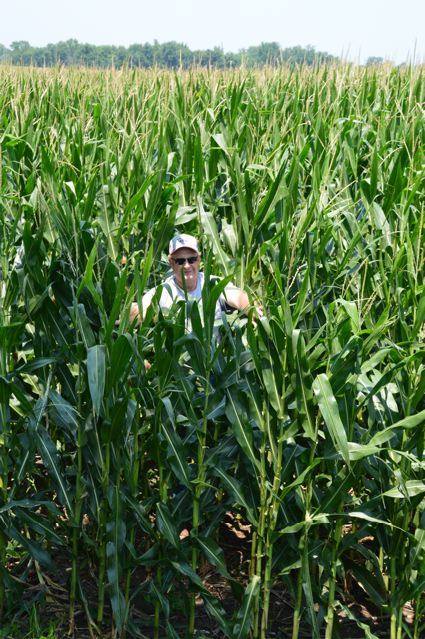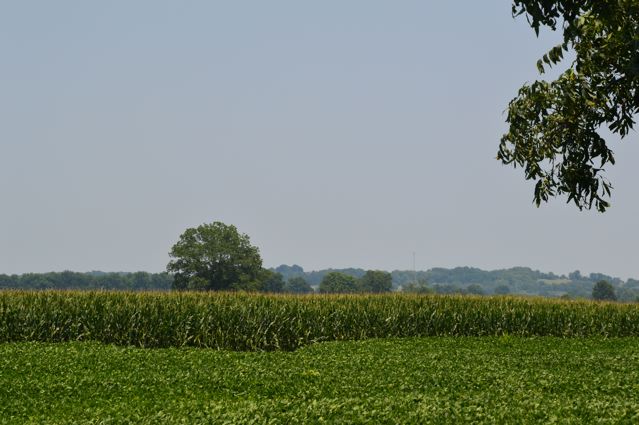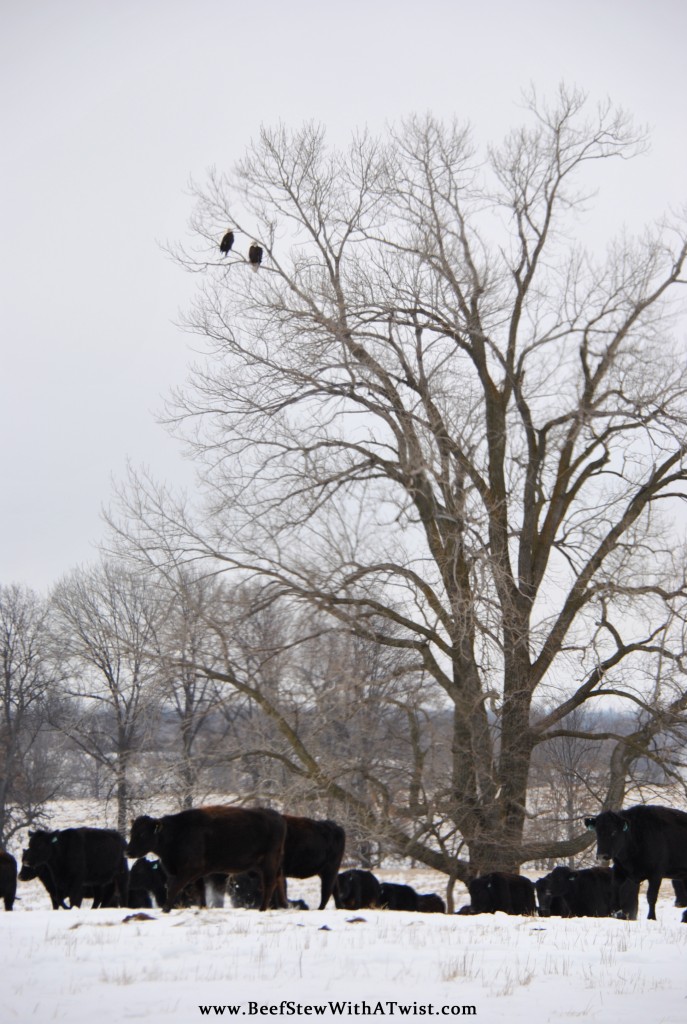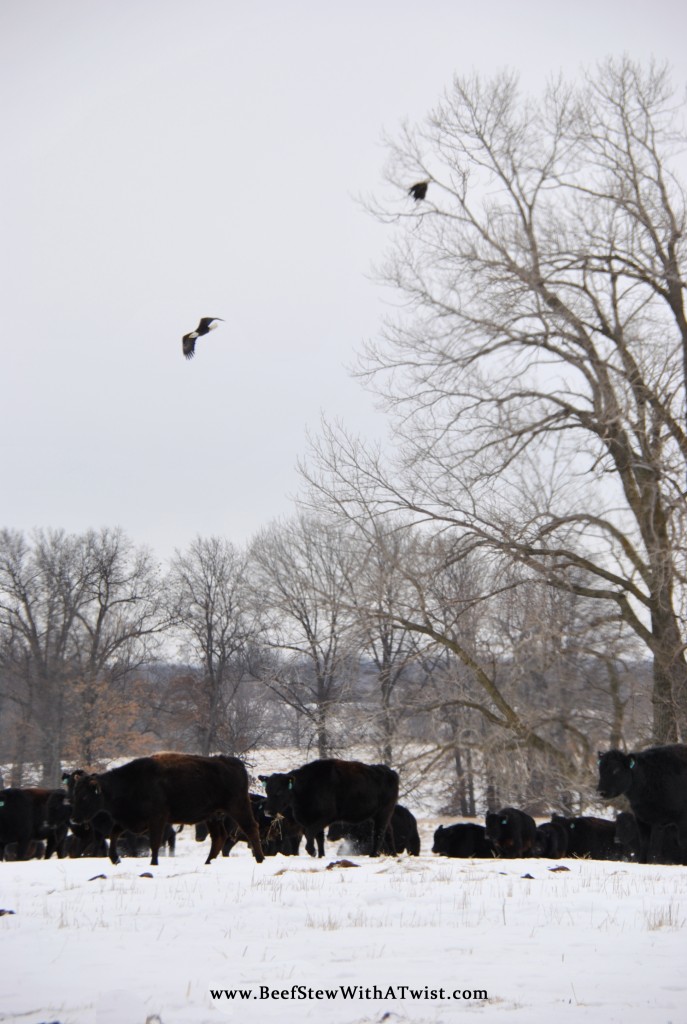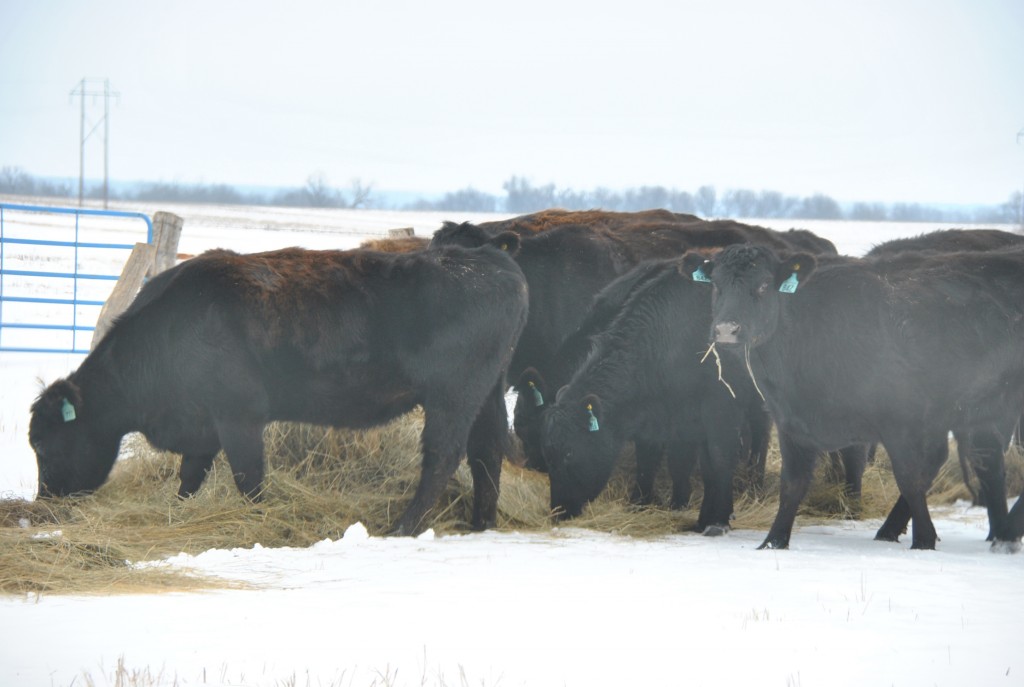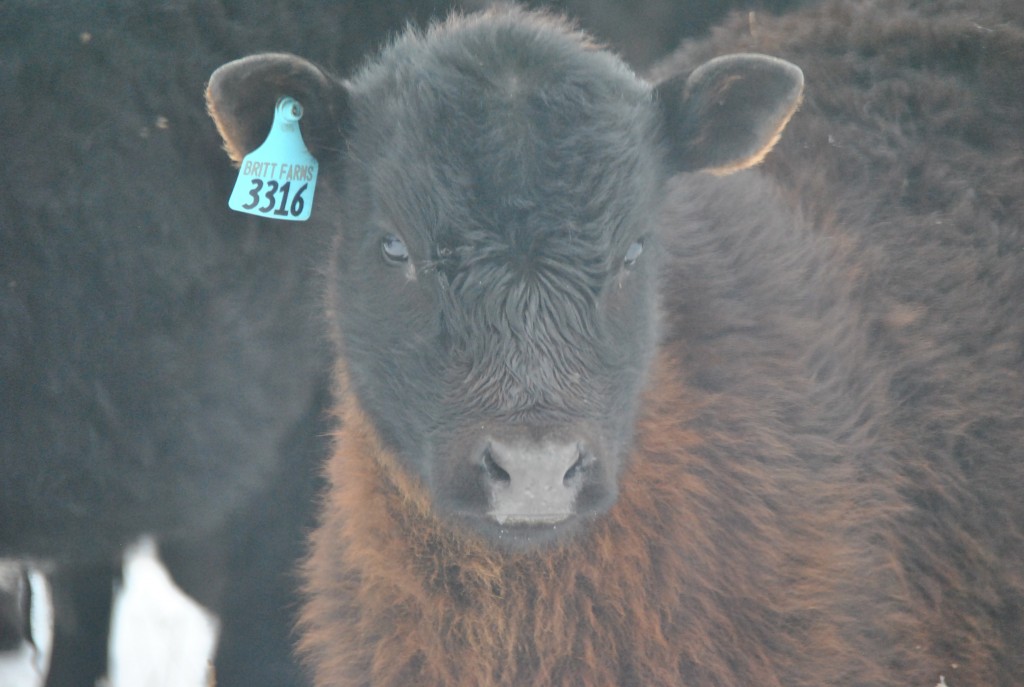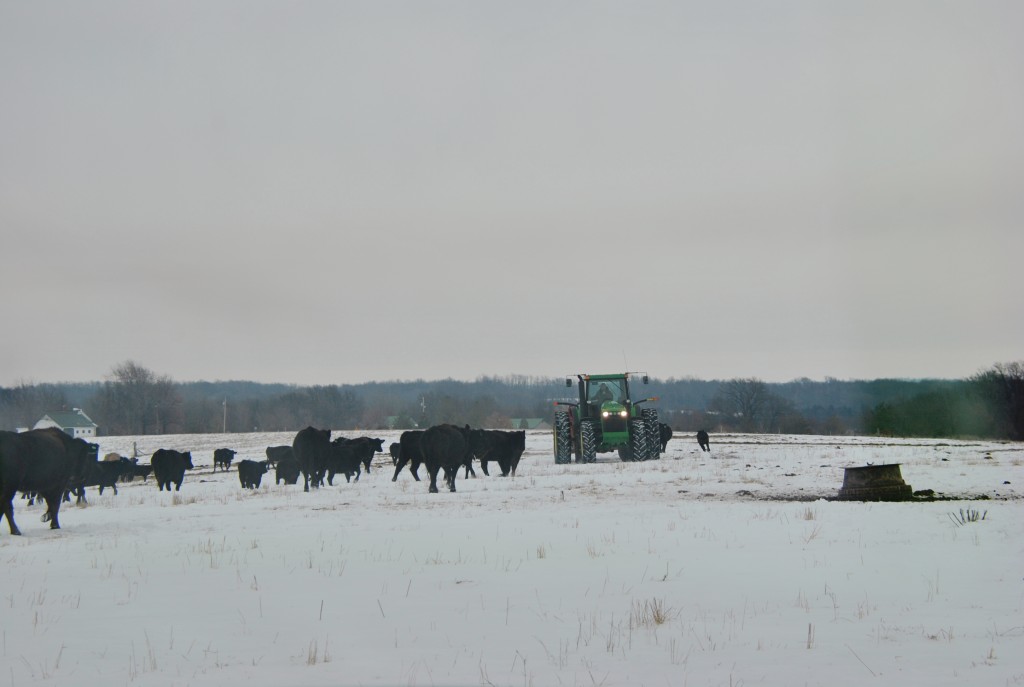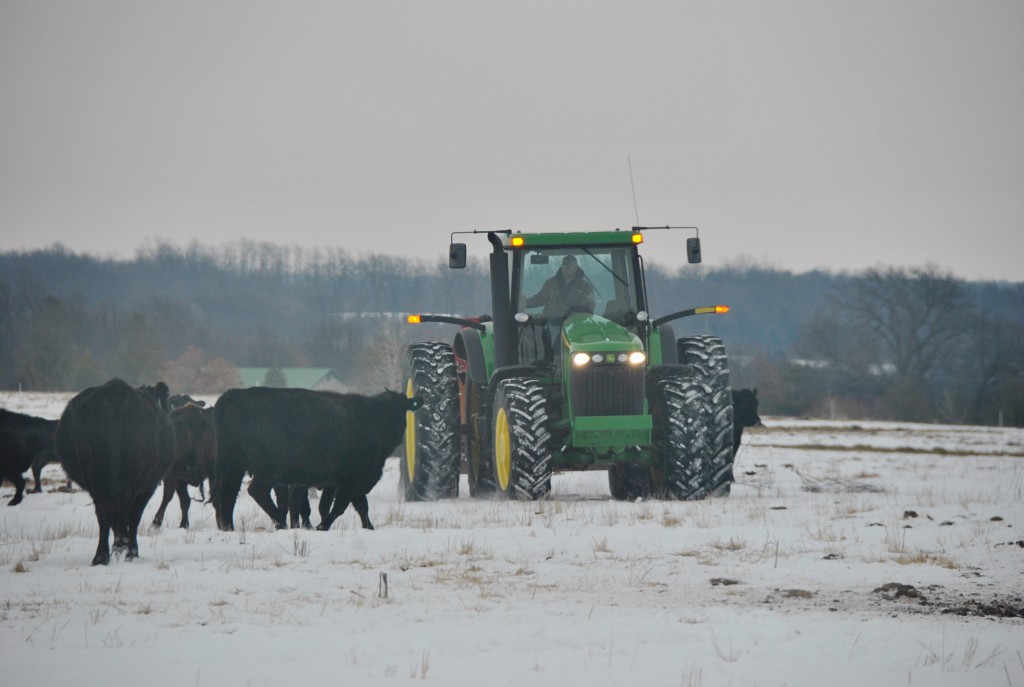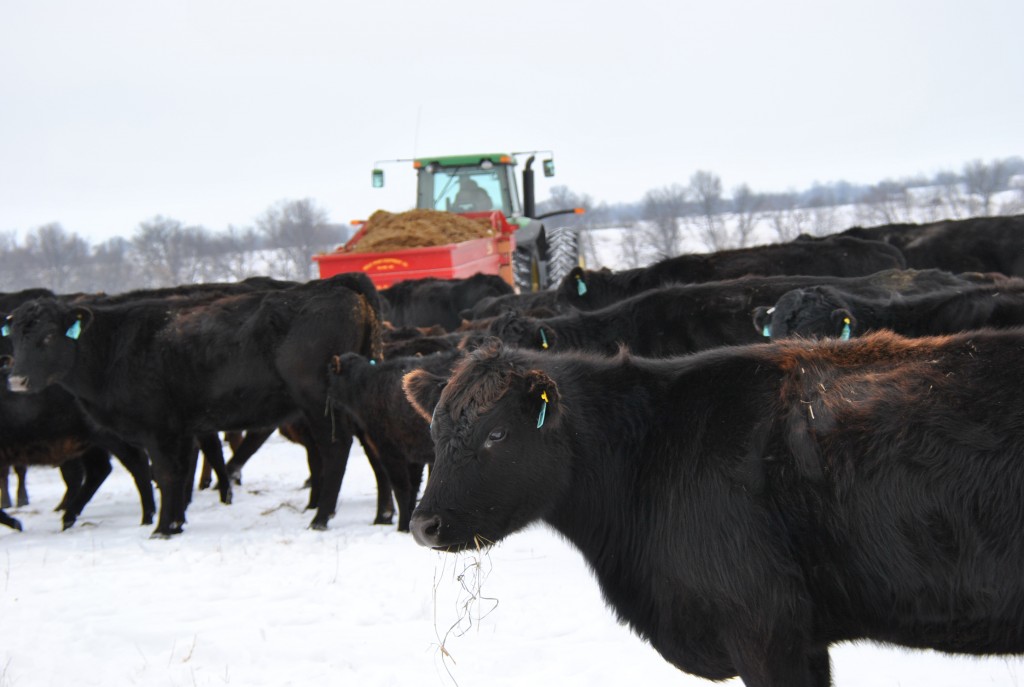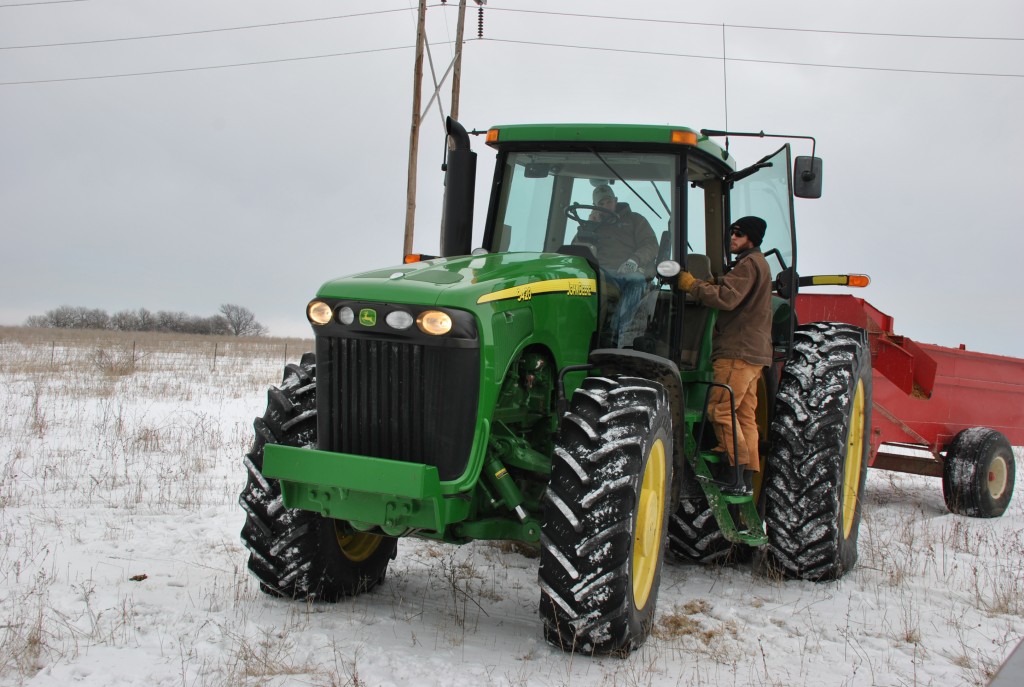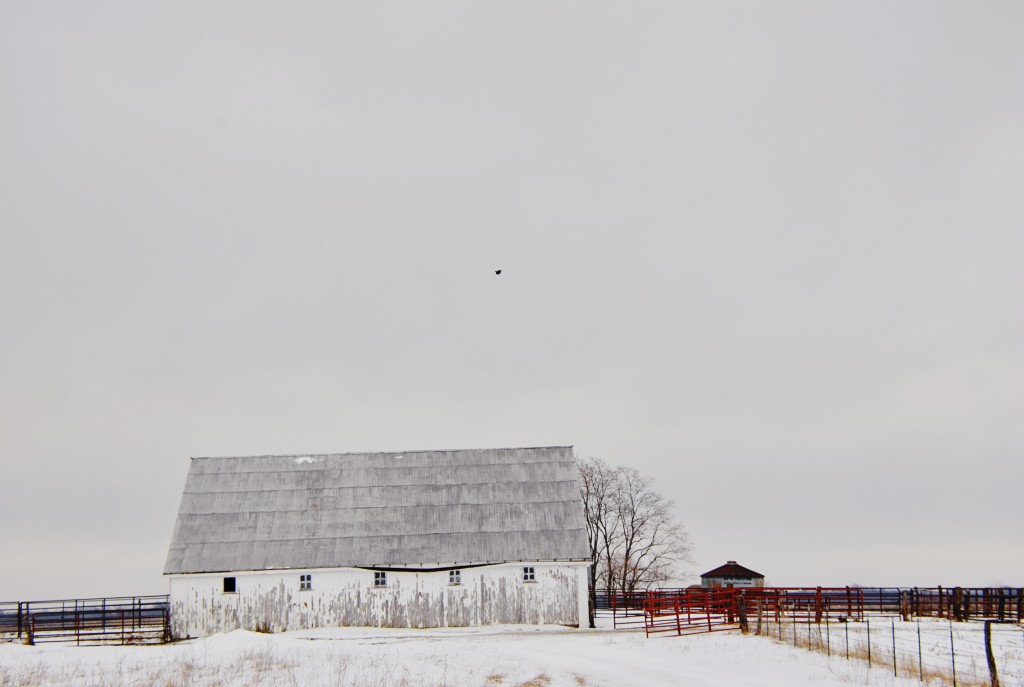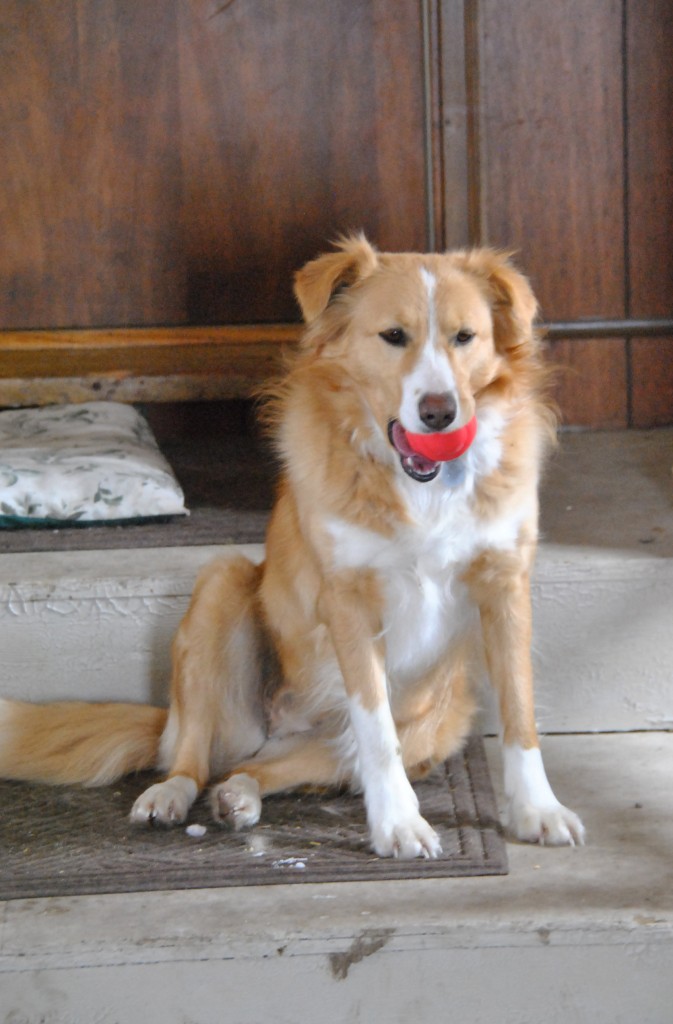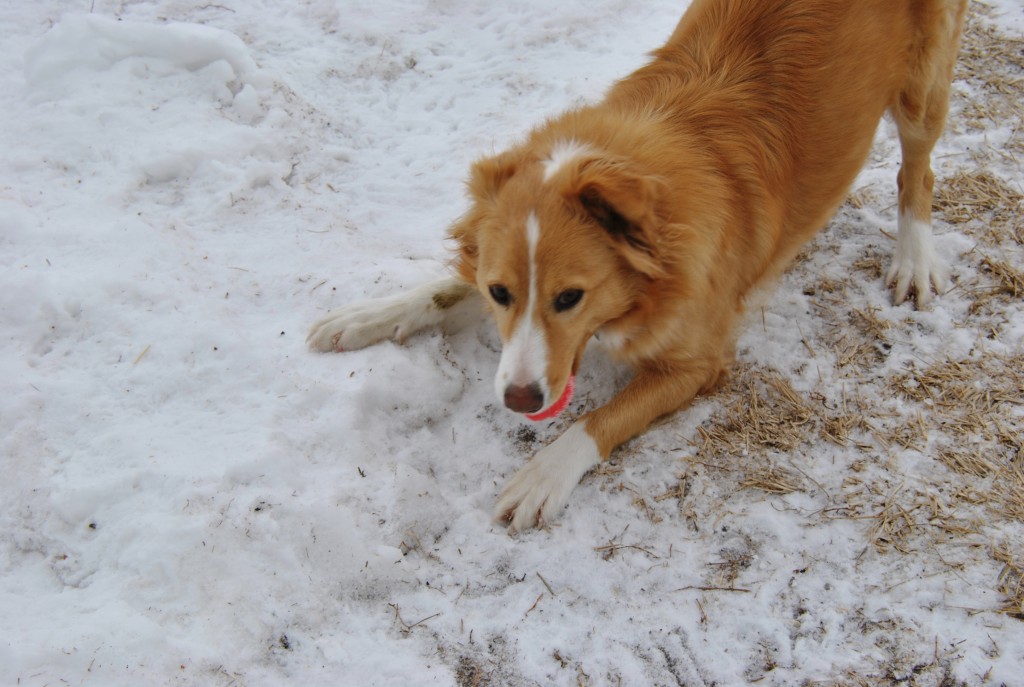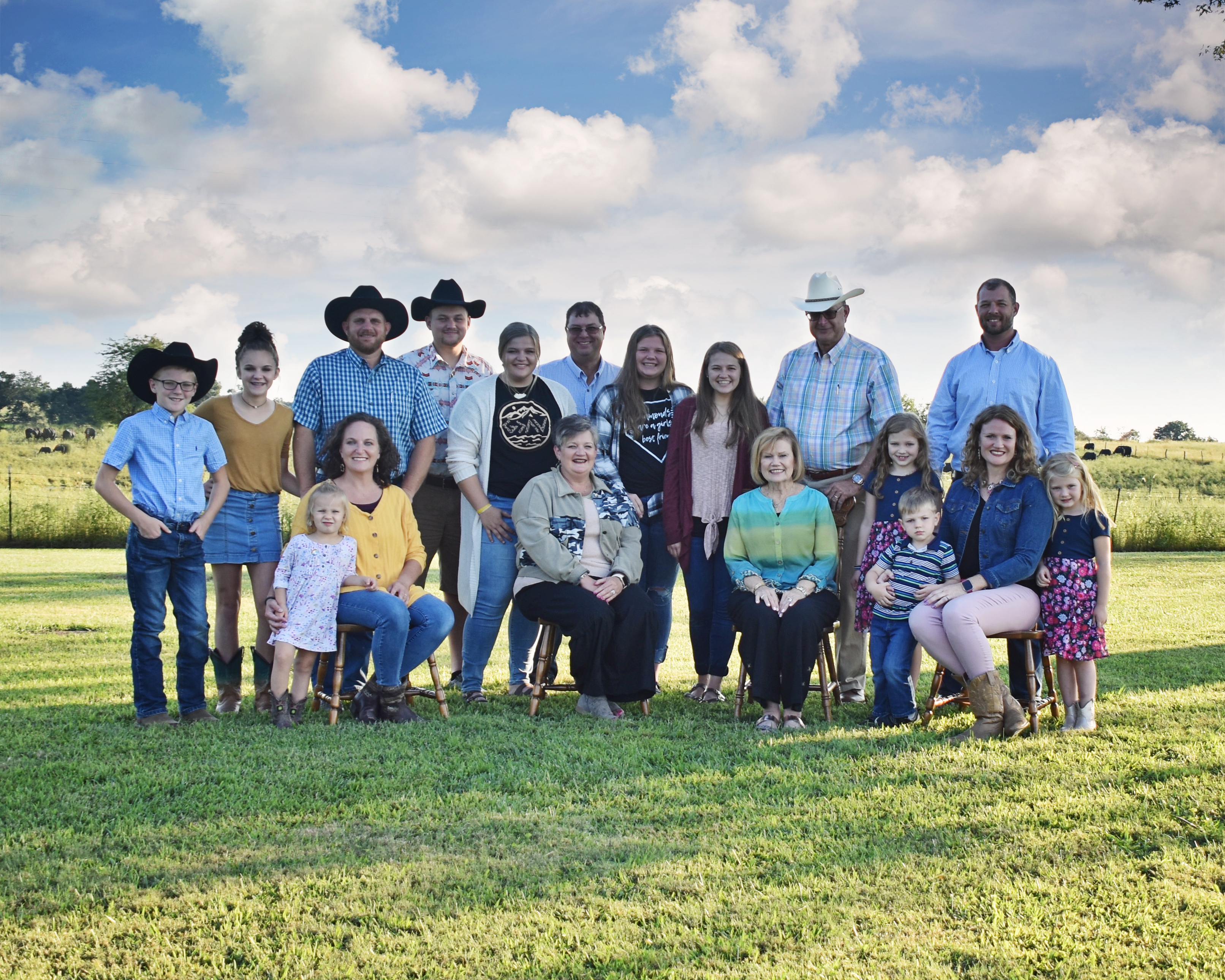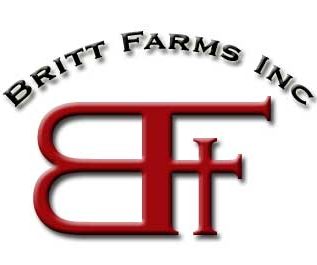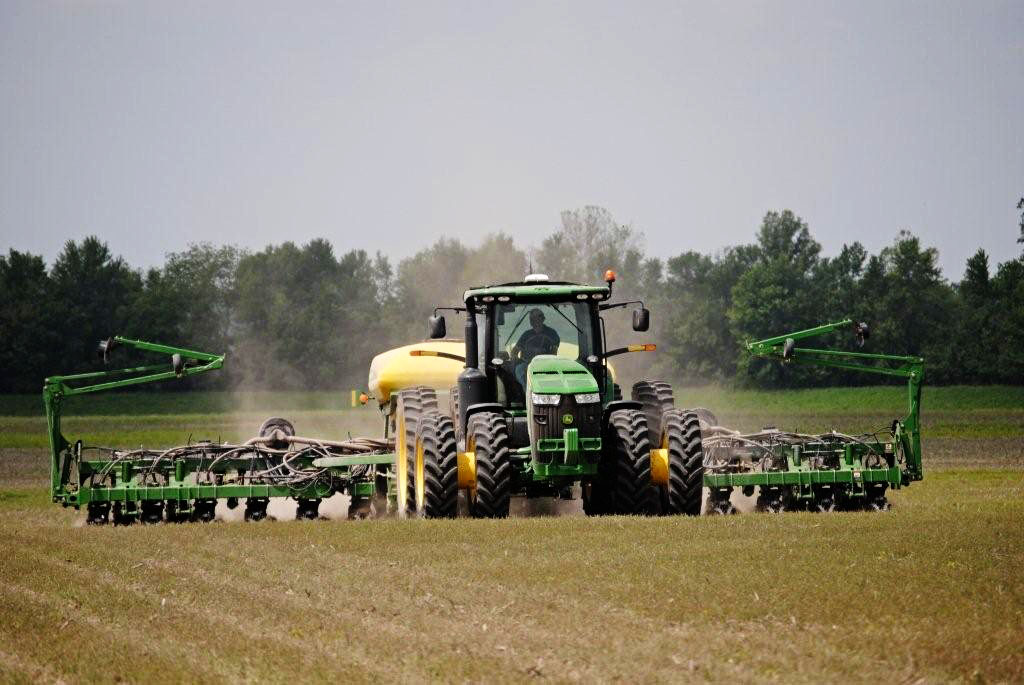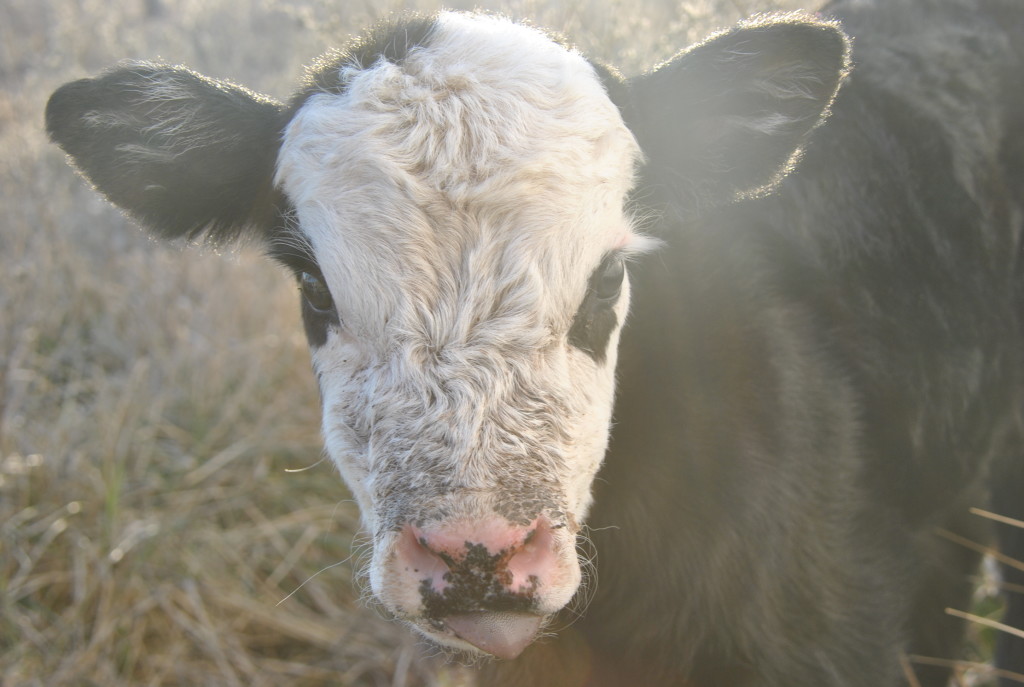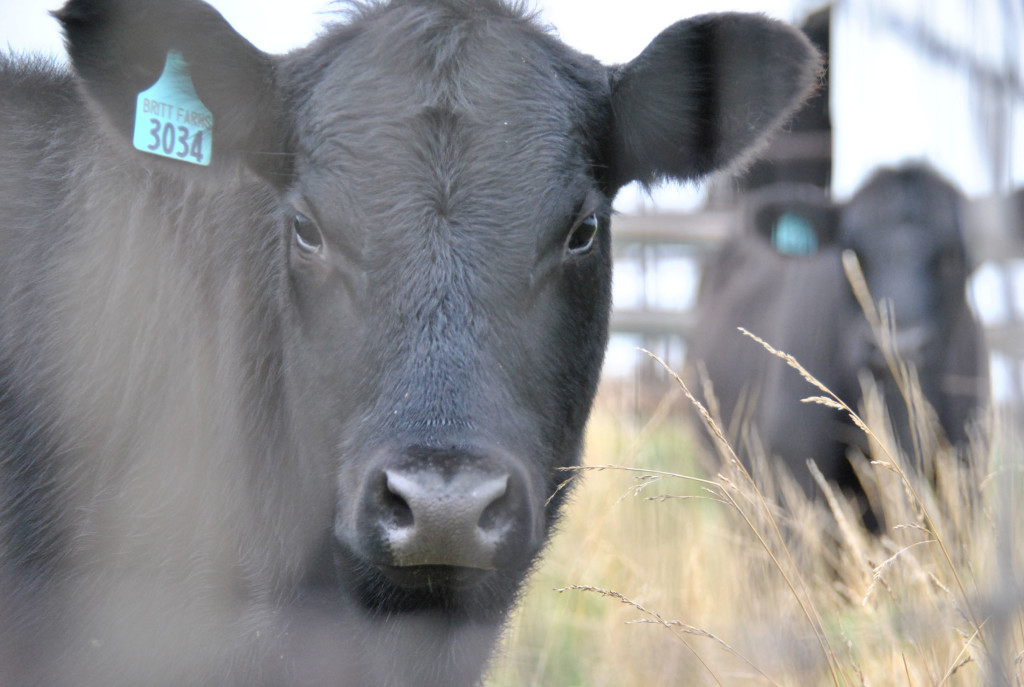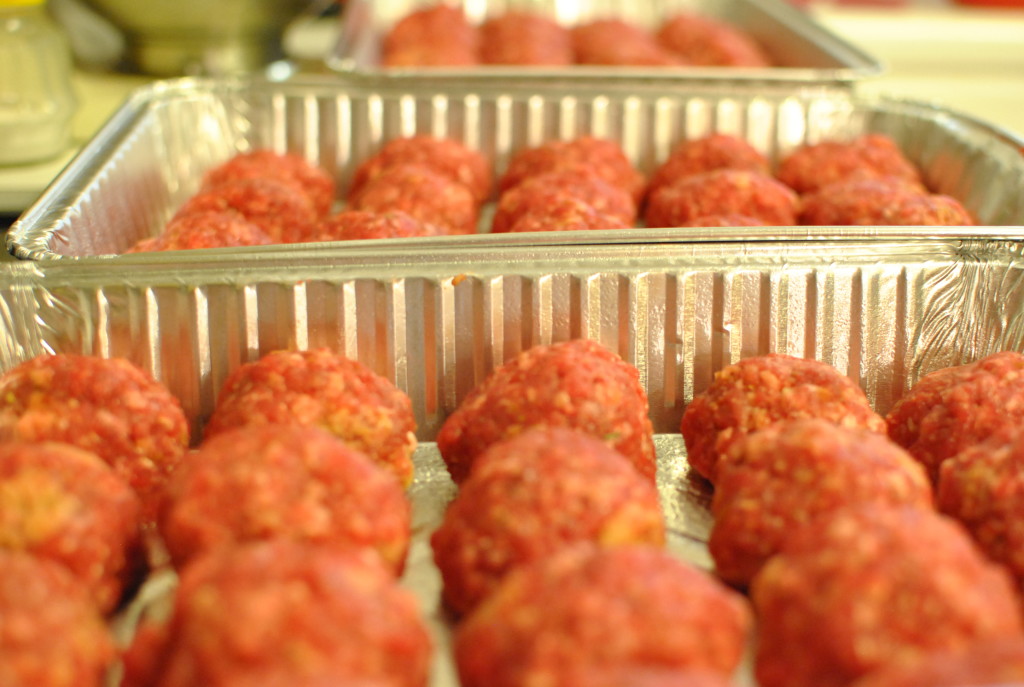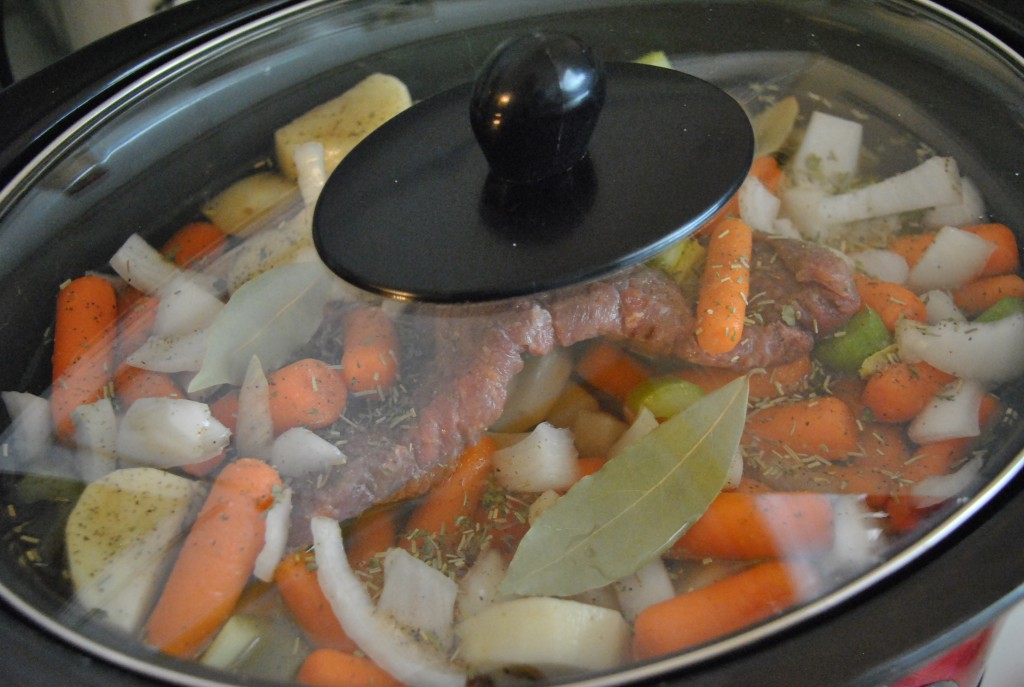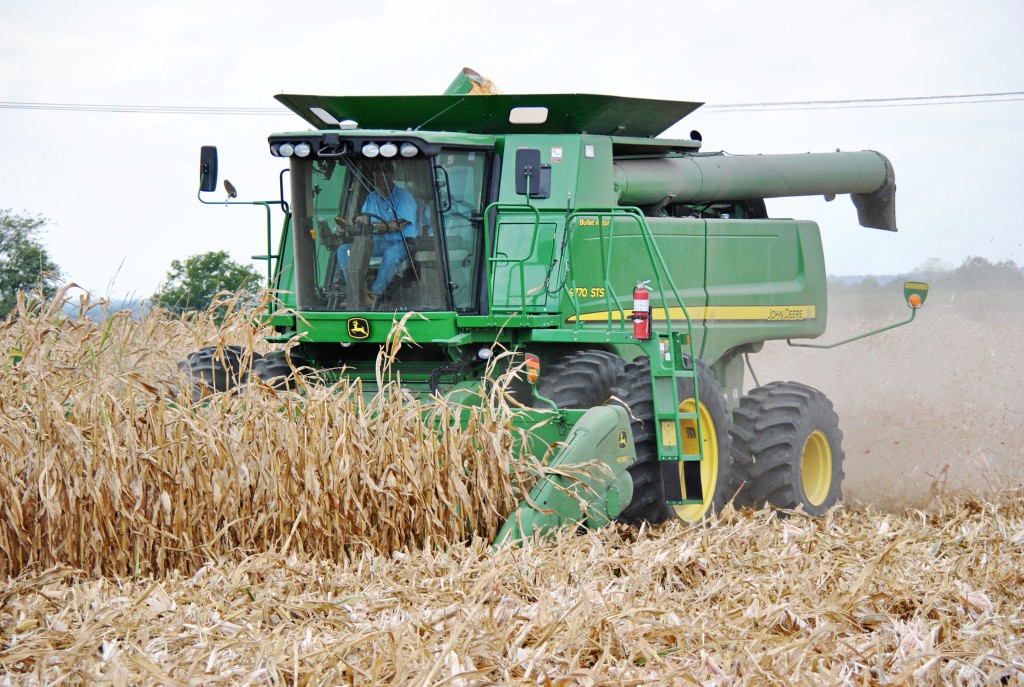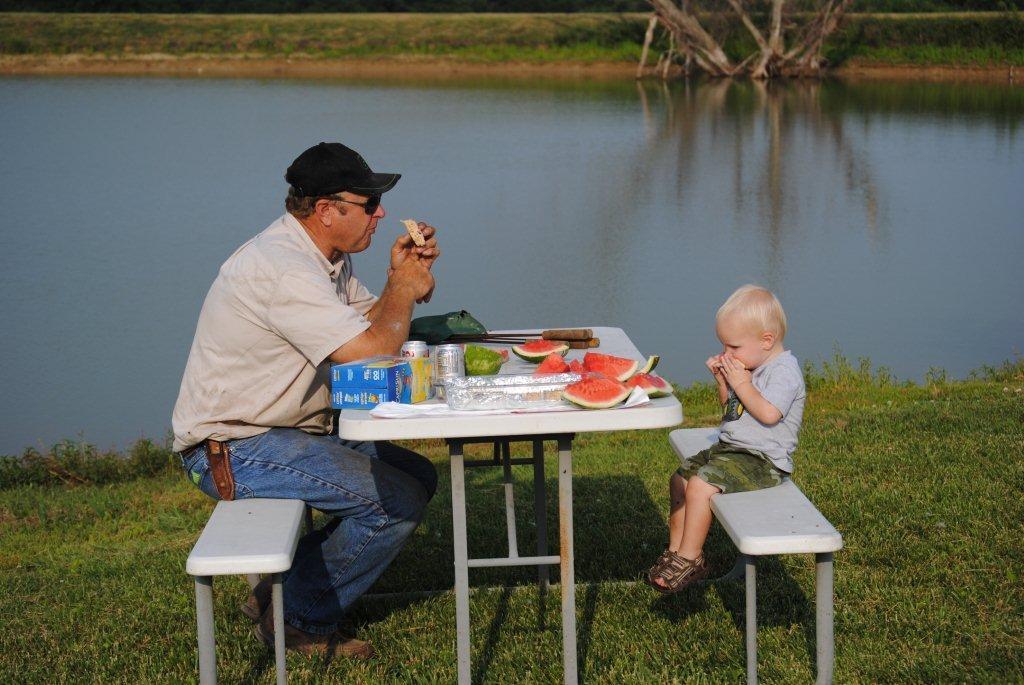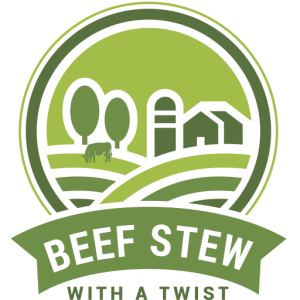Your source for Healthy and Affordable Beef
A drive through the river bottoms
These photos were taken about a month ago along the Missouri River in Glasgow, MO and in our corn fields near there by my mom, Karla. The mighty river was flowing fast that day as Iowa had received a lot of rain pushing the water south. Since then the rain has slowed, but we are praising God for giving us a long shower last night! We were in great need of it!
Side note: If you are ever in Glasgow we highly recommend The Rolling Pin as your lunch/dessert spot! Jeremy’s pies and pastries are scrumptious!
Here is the stream from Lewis Mills joining the Missouri…
 While touring riverside, they stopped to check the fields. The corn looked beautiful that day as it towered way above my 6’3 dad!
While touring riverside, they stopped to check the fields. The corn looked beautiful that day as it towered way above my 6’3 dad!
I was recently asked where our corn goes once it is harvested. The short is answer is that we use a lot of it to feed our cattle once they are weaned and the rest is sold to various contract buyers including NEMO Ethanol plant near Macon, MO, dog food companies and some ends up on barges heading to companies that turn it in to Frosted Corn Flakes possibly or Tostitos Corn Chips!
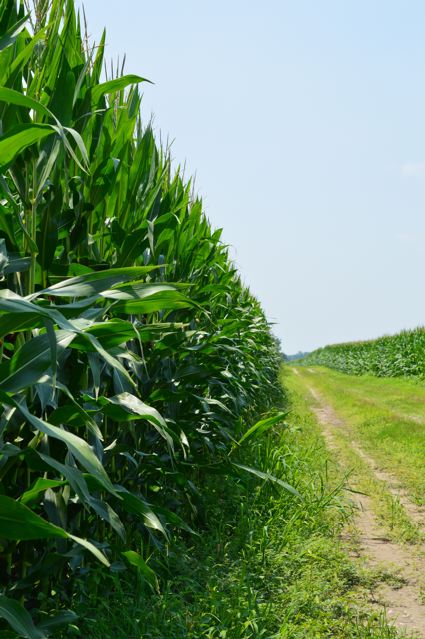 Do you have any questions about raising corn? Leave them below in the comment section!
Do you have any questions about raising corn? Leave them below in the comment section!
Thanks for taking this river tour with us!
With eagles gazing upon us…
This morning our men fed cattle with two eagles gazing down upon them. They were magnificent!
Through the winter months, our cattle are fed hay and often supplemented with silage. In today’s photos you will see the hay bales have been rolled out onto the ground for the cattle to eat and also to provide warm places for the calves to lay in.
This calf has a full winter coat on! The winter coat often brings out the red in their Angus hair!
Once the hay has been unrolled, we dump silage on top to add extra protein and carbohydrates to keep the cattle well nourished in this colder weather. Silage is basically the entire corn stalk harvested when it is still green and full of sugary corn kernels. We store it to feed throughout the winter. It smells so sweet! When the cattle hear the tractor coming with the silage wagon they kick and run after it!
Ryan E and Ryan B were having some trouble with the forks on the feed truck. The forks weren’t wanting to lift up the heavy bales in the freezing cold! Between a phone call and conversation they were able to figure it out. Thankful for an entire community of farmers and agri-businessmen who are even available on Saturdays!
While driving toward home we enjoyed seeing another beautiful eagle fly over the big white barn.
As always, Shep greeted us with her ball and was ready to play in the snow! We threw it for her and then quickly warmed up and put some beef stew in the crock pot! This time we used the round steak instead of a roast. What is your favorite round steak recipe? Another way to prepare it is to pour tomato sauce over top of the steak, chop some onions and let it cook on low for 5 hours. Serve with mashed potatoes and corn! YUM! Any hot beef dish will warm you up on a cold day!
Let us know if you have any questions about farm life or beef recipes! As always, thanks for visiting our site!
Olympian Kaitlyn Farrington’s family sold cows to pay for training!
Kaitlyn Farrington’s road to Sochi was a unique one. In order to pay for her equipment and contests, her father would sell cows.
Photo from NBC Olympics
As we are certain you are all aware, it is time once again for the Winter Olympics. With stories of the conditions of Sochi, Russia, pouring out of every news outlet, how could you not be aware? However, we are not interested in regurgitating the double-toilet/no toilet issues the Olympians are facing, nor do we wish to bore you with further talk about very dangerous beer-colored water, electrical wiring connected to the shower faucets, etc., etc. Instead, we would like to enlighten you on an interesting story about a young woman, her dream of being an Olympic athlete and the cows that got her there. Yes, cows! Kaitlyn Farrington, a 24-year-old snowboarder competing in the women’s halfpipe, made it to the Olympics by selling cattle. Her parents farm in Sunny Valley, Idaho, and to pay for their daughter’s training and travel, they would sell a cow at a time. What an amazing support system Miss Farrington has. Well, we certainly know who we’re rooting for in the women’s snowboarding competition.
– Article from Farm Journal “Grazing the Net”
Eating beef without going broke:
Photo above taken today on the farm. Remember those cute little bottle calves we were feeding earlier this year? That’s them!
Eating beef without going broke:
As beef cattle producers we are finding ourselves in an interesting position. We have cattle to sell but it’s hard to ask people to spend the amount of money that current prices are demanding. It’s easier to load the cattle up and take them to a larger feedlot than it is to market to individual families and customers. However, it is important that we share what we do know about the current prices, the future of the beef industry and what we would suggest to families wanting to eat healthier beef. Once our customers and potential customers have this information we believe they will be able to make a more clear decision on their grilling meat of choice this year.
Why are prices so high?
The high prices are a combined result of natural disasters and a recovering market. The beef industry was just beginning to recuperate from the “mad cow” scares and “pink slime” concerns. However, as demand increased the timing collided with a three (potentially four) year drought and a blizzard in our western states. The drought caused low birth rates, weakened our cattle and decreased our feed supply (hay, grass and corn). Our farm personally lost many calves due to insufficient nutrients and premature births. We also had to cull several older cows who couldn’t produce anymore after the toll the dry, hot conditions had taken on their bodies. Along with this drought, an early blizzard in South Dakota caught many ranchers off guard and as a result they lost tens of thousands of cattle last year. Simply stated; our beef supply is low for reasons outside of our control.
“We have been in a drought situation for much of the last three years which has caused a 60-year low in cattle numbers. We are now looking at a period of reduced production as part of that process is allowing cows to mature, and allowing people to rebuild their herds,” Derrell Peel, agricultural economist based at Oklahoma State University, said in an article published by NBC news.
Will prices go down before summer?
Beef supplies are expected to continue to decline which could lead to increasing prices through grilling season over the summer. Some may ask how the demand could stay strong with the prices so high? Won’t it level off with a lower demand matching the low supply? Even with our economy still recovering the demand may not suffer as much as one would think. It depends on a family’s income and the value placed on beef within their menu planning. Many people see the health benefits, flavor and menu variety as worth the higher price. They may not purchase steaks from the grocery store as often, but they are willing to pay a little more for the hamburger.
Personally, we believe the prices have stabilized for the time being. We are not sure what the future holds honestly, but we do not expect prices to go back down anytime soon.
However, we do expect more people to branch out with their purchasing methods. If a family were to purchase their beef straight from the farm then they could have both hamburger and steak for the same price. Many consumers are already doing this to cut out middle costs and to be able to buy in bulk at a fair market value. Of course, this also allows for families to know exactly where their beef comes from and to purchase healthier beef than what most grocery stores can provide at that price.
How will Britt Farms respond to the higher prices?
Like other producers we are stretching our feed supply to the max through rotational grazing which allows our cattle to eat grass longer and still receive the nutrients they need. We produce our own corn which allows for us to save on some feed costs. After the first of the year we culled several head of older, weakened cows (mostly as a result of the drought) and now we are needing to replenish the herd. At these prices though we are carefully discussing options so we can have the best return on our investment. We are thankful to be in this industry and we want our customers to still be able to serve beef on their table even with the current market trends. We commit to doing everything possible to provide quality, healthy meat for less cost to the consumer.
Right now we have 13 head meeting natural Angus beef standards (antibiotic and hormone free) available for direct purchase. Based on the current market prices we are selling these cattle at a live weight cost of $1.47/lb. The processing fee is $0.41/lb through King’s Processing in Marceline (or the processor of your choice). When a customer pays live weight for an animal, they can expect to take home roughly 33% of the animal (according to the 2005 National Beef Quality Audit) with the beef cut to personal preference. If a customer purchases a 1,200 lb steer, he/she can expect to take home nearly 400 lbs of meat. Even with these higher market prices, our customers are paying less for our beef then they would spend at the grocery store, especially for steaks and roasts! Our prices are the same for every cut of beef. Compare these prices with the local grocery store and our customers will enjoy saving money while at the same time receiving better quality beef and knowing exactly where it came from.
Grilling season doesn’t have to suffer. Steak dinners do not need to become a luxury of the past. There are options and we would be happy to work with anyone interested in buying in bulk now in order to save later.
The 13 head mentioned above will be ready by March, and 4 are already spoken for. We can divide an animal in half or by quarters depending on a customer’s needs. To join the waiting list please click here. For more information about our processor of choice or the cattle we raise, please click here for our Q&A page.
We are so grateful for our customers and for everyone’s interest in our farm and modern agriculture! We are blessed to feed the world!
A non-traditional, but absolutely wonderful Thanksgiving!
Happy Thanksgiving from our family to yours!
We had our scrumptious “traditional” Thanksgiving dinner last Sunday so today Mom and I decided to get busy making some homemade Christmas gifts! We had so much fun!
I suppose we did enjoy a few of our favorite traditions as well…the Macy’s Day Parade, annual dog show and mom made two amazing pumpkin pies! Dad and I have a tradition of fighting over the pumpkin pie! Ha ha!
For my sweet hubby, I whipped up his grandmother’s sour cream sugar cookies! These are one of his favorite holiday desserts…
Dad and Hubby made the rounds checking cattle, tagged a calf and discussed farm business while Mom made a family favorite for lunch….Cheeseburger Soup! You can find the recipe HERE (through one of our previous posts). This soup is truly hard to beat! Being the beef eaters we are, we like to use 2 lbs of hamburger…extra protein and extra yummy!
Once we wrapped up lunch and saw the dog show winners prance their way around the show ring one last time, we began to tackle our homemade Christmas gifts…Southern Mustard and Cinnamon Beeswax Candles!
Side story: I’m not sure if I told you or not, but earlier this fall we discovered the unthinkable and unimaginable….honey bees in our chimney! We noticed an odor seeping through the fireplace and upon further investigation (and a bee sting) we found out what all the buzz was about! We can’t even begin to guess how much honey was being made just beyond our living room wall! They were truly busy bees! Here’s a very quick pic my hubby took on his phone the day they found them…
For various reasons we were unable to harvest the honey, however, we have some beautiful combs now and the whole experience inspired Mom and I to research how to make candles and other items from beeswax. After an exciting trip to Micheal’s yesterday, we returned with all of the necessary ingredients.
- 4 lbs beeswax
- wax scent oil
- craft thermometer
- wax dye
- wicks
At home, Mom and I had the following on hand…
- double broiler
- wooden spoon
- jars
Did you know that beeswax candles are low burning and smoke free? That’s what we read! We haven’t lit ours yet, but we’ll keep you posted! Also, we may have a deal worked out with a local bee keeper to have bee hives on our farm! We will keep you posted on that development as well! Anyway, back to the candle making…
First, you hot glue the wick to the bottom of the jar.
Next, simply melt the beeswax in the double-broiler and add the dye (according to the specifications on the package). I made some yellow (to look more natural) and some red (for Christmas…although they turned out to be more of a pink…should have used more dye!)
Once the wax has reached 175 degrees (melting point is like 143 so wait a little longer!) then you can add the fragrant oil. We chose a cinnamon scent for Christmas! Stir with a wooden spoon and then pour into your jars. Only pour 3/4 of the amount you would like into each jar and let it sit for 20 minutes or until thickened.
Next, slide the wick back to center position and poke a few holes in the wax with a toothpick to relieve any tension. Now you can pour more melted wax into the jar, reaching your desired candle height.
We used 4 lbs of beeswax and it made 12 candles (jelly jar size). They are cooling overnight and then we plan to trim the wicks and add the final touches! (Final pic to be posted at a later date!)
While I was focused on my 12 candles….Mom made 5 HUGE batches of homemade Southern Mustard! Here’s the fun part….I can show you the pictures I took while she was diligently stirring and scooping, but I cannot share this recipe with you. It is a secret family recipe given to my mother by my Aunt Rhonda. I can give you Aunt Rhonda’s address, but not the recipe…actually I can’t do that either. Hee hee! However, because we love to give gifts and we are so thankful for each one of you, if you post a comment below sharing with us what you did this year for Thanksgiving, then we would love to send you a jar of homemade Southern Mustard as a gift from our family! We will send out as many as we can (until supplies last)! It is the perfect combination of sweet and tangy….YUM!
To those of you out shopping all night – have fun and be safe! Grab an extra good deal for me…. I am going to bed!
Good night and blessings to you and yours,
Kara



